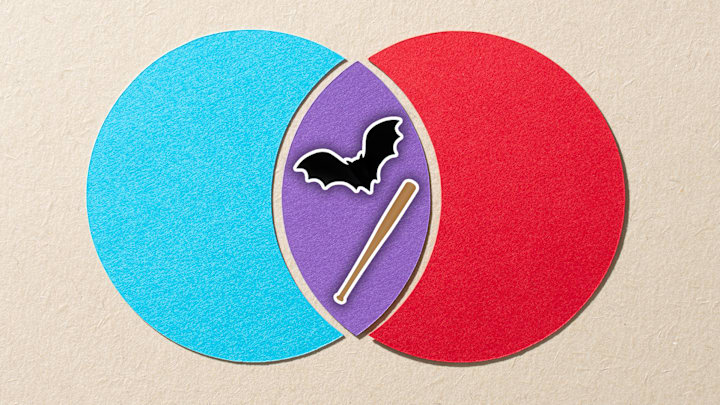It’s hard enough to keep pairs of nearly identical words straight. Harder still is remembering which term—homophone, homograph, or homonym—describes them. Part of the confusion stems from the lack of consistency in the way people use the terms. But here’s an overview of the baseline qualifications for each one.
As Merriam-Webster explains, homophones are two or more words that sound the same, but have different meanings and/or spellings. This technically would mean that donut and doughnut are homophones, because they sound the same but have different spellings. But usually when people talk about homophones, they’re referring to words that sound the same but mean different things. Some are spelled the same, like bat (as in baseball bat) and bat (the winged mammal). Others aren’t—like to, too, and two. Homophones with different meanings and different spellings are sometimes known as heterographs.
Homographs, meanwhile, are two or more words that are spelled the same, but have different meanings and/or pronunciations. Similar to the donut-versus-doughnut situation, this would suggest that any word with multiple pronunciations qualifies as a homograph—e.g. pecan, pronounced “PEE-kan” or “pih-KAHN.” But homograph is more often used to describe two words that look the same but mean different things. Some are pronounced the same, like date (the day of the month) and date (the fruit). Others aren’t—like tear (rhyming with hair) and tear (rhyming with near). Homographs with different meanings and different pronunciations are sometimes known as heteronyms.
And yes, there’s quite a bit of overlap between the two categories. Any words that are spelled and pronounced identically but have separate meanings are both homographs and homophones—including bat/bat and date/date. Here’s where homonyms come in: To some people, homonyms are any words that qualify as both homographs and homophones. Others consider it more of an umbrella term that includes all homographs and homophones.
Here’s a handy chart to help you tell your homophones from your homographs (and everything else):
Term | Definition | Examples |
|---|---|---|
Homophones | Words that sound the same but have different meanings and/or spellings | forth vs. fourth, pen (writing utensil) vs. pen (enclosure) |
Heterographs | Homophones with different meanings and different spellings | forth vs. fourth |
Homographs | Words that are spelled the same but have different meanings and/or pronunciations | pen (writing utensil) vs. pen (enclosure), wound (rhyming with 'hound') vs. wound (rhyming with 'tuned') |
Heteronyms | Homographs with different meanings and different pronunciations | wound (rhyming with 'hound') vs. wound (rhyming with 'tuned') |
Homonyms | Words that are both homophones and homographs (i.e. words with different meanings, but identical pronunciations and spellings); or, an umbrella term for any kind of homophone or homograph | pen (writing utensil) vs. pen (enclosure) |
